
Pulling More Performance Out of Miata
By Iain Ayre
Mazda’s Miata is emerging as an ideal base for various replicas and other types of re-bodies with exotic, high-performance looks. But given the comparatively modest output of its four-banger engine, who wants a sheep in wolf’s clothing? Fortunately, we have a range of cures for that.
Turbocharging existing Miata engines remains a good idea, with tens of thousands of people enjoying the process of continuously improving their turbo setups. The basic idea is to put more air and fuel into making your car go faster, either by fitting a bigger engine with more capacity or by stuffing more in with a turbocharger or a supercharger.
Turbocharging is bigger than supercharging in the Miata community, although there are blower options made by Track Dog, Kraftwerks, Good-Win and Rotrex, among others. With smaller engines, the need to drive the supercharger with a belt on a small engine is less popular than the free exhaust-pressure power used to drive turbochargers. There’s also pretty insane power available from turbochargers as you progress. I’ve watched a Supra Turbo engine progressively rising from 300 to 1,000 bhp as the turbo system was developed. The Miata turbo forum is Turbocharging 101.
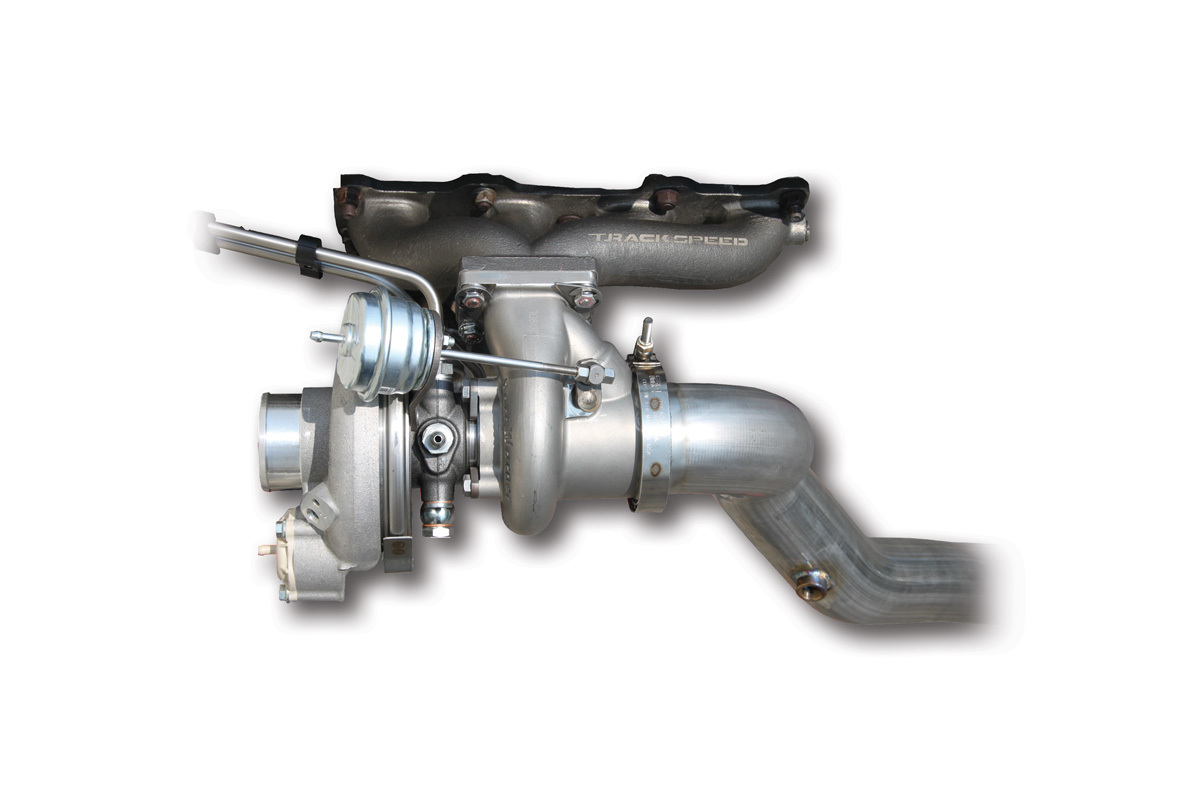
One turbo bonus is fuel economy. A 1,600 cc Miata (the preferred size among the boost bunnies for its fast responsiveness) driven mostly off-boost gets 30 mpg. A V8 likely won’t.
Speaking for the V8 option, putting an engine in a Miata that’s three times the size of the original is nowhere near as dangerous as you might expect, and is actually a fine idea. Replacing a 1,600 cc lump with a 6.0-liter engine in other small sports cars would be suicidal, but the structure and design of the Miata make it not just possible, but borderline reasonable.
Speaking firsthand about what happens when you stuff a V8 into a Miata, I’ve road tested one of Monster Miata’s cars. After cruising away from an urban area until there was nothing on the shoulder to hit but tumbleweed, I let ‘er rip. Rather than just leaving squiggly black lines leading to a crash site, the V8 Miata hooked up better than expected. Being rude with the throttle in a grossly overpowered Miata can certainly achieve instant donuts, but rolling it out quite hard just delivered massive thrust and a blurry horizon, a very quick slipstream rush and a delicious V8 baritone howl from the exhausts. Relatively massive V8 torque also makes shifting optional: Second and top gears are plenty. The main reason for additional gear changes is the soundtrack.
One unexpected clue to the success of big-power Miata conversions is that the torsional stiffness of even an early Miata monocoque is as high as some Lotus Seven-style spaceframes. Another is that the kits usually add even more bracing, and often a Thunderbird or other independent rear end that will take the torque but will still behave like a Miata suspension.
A useful tip for those on real-world budgets is that an NA 1,600 cc Miata’s differential is good for up to 2 liters but definitely not 6. On the other hand, the bigger differential that comes with the 1,800 cc cars will handle even V8 power, at least for a while. So if you don’t want to cough up for a T-bird’s big Ford differential right now, you could stay with the NB differential until it blows up, and use the Miata differential’s life span to let your wallet recover from the V8 conversion. Just don’t dump the clutch at 5,000 rpm.
There is talk about using Mazda rotary engines in Miatas, but there’s no conversion kit, just talk. Mazda rotary engines would give you smooth high revs, dubious fuel economy, 180 bhp of turbocharge, and strange, exotic noises. The only sensible approach would be to buy a complete rotary Mazda, fillet it and stuff the entire engine bay contents into a Miata.
Of course, the internet offers a free share in everyone else’s experience, and if you’re wary, the Miata forums offer useful advice (but also drivel from fantasists who don’t even own a car). As an example, using the Cadillac CTX differential can be a good idea, but only if you use post-2006 donors to avoid the earlier models’ whining and grenading. Forewarned is forearmed. Do your homework. What follows is a guide to several companies known for muscling up Miatas.
MEGASQUIRT
Megasquirt started off as open-source software, and you can still get as hands-on as you’d like without actually writing computer code. You can buy the bare board and electronic components and solder up your own motherboard. Alternatively, at the other end you can buy a complete plug-and-play system from Megasquirt’s resellers for road or race, which you can program to do everything you could want. www.msextra.com.
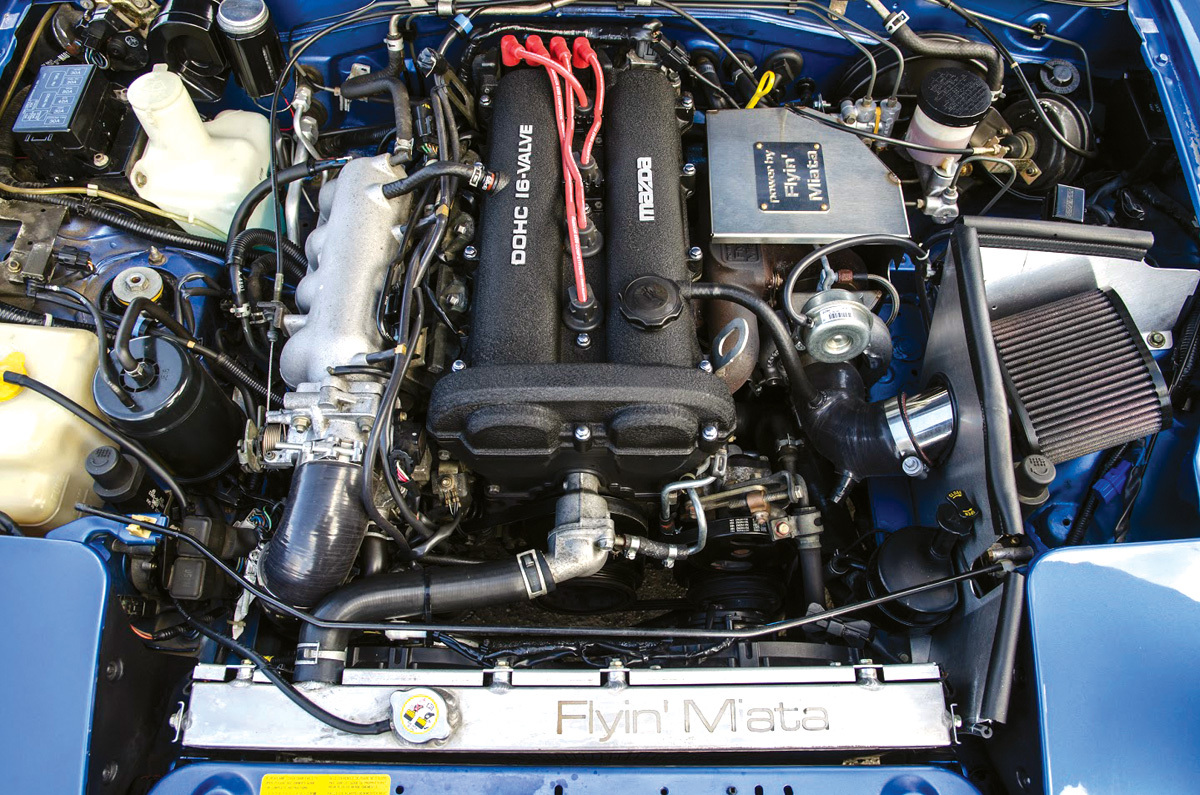
FLYIN’ MIATA
FM got into turbos early on, and have assembled a range of packages that can be bought complete or pick, mixed and developed according to budgets and the need for speed. Using your own Megasquirt to control fuel and spark and then adding assorted bits of FM’s turbo kit would be a fine idea, but the company prefers the Hydra Nemesis or the upcoming FM221 ECU, which comes with its kits. The company’s complete FMII turbo system at $5,300 doubles the power output of a 1,600 cc Miata, and contains every nut and bolt, air filter and intercooler, and even the hose and pipe clamps and the ECU. Most important are the included larger injectors. After a certain point you need more fuel to match the extra air, or you risk leaning out the mix and melting pistons. You don’t get a laptop or cappuccino machine with it, though. www.flyinmiata.com.
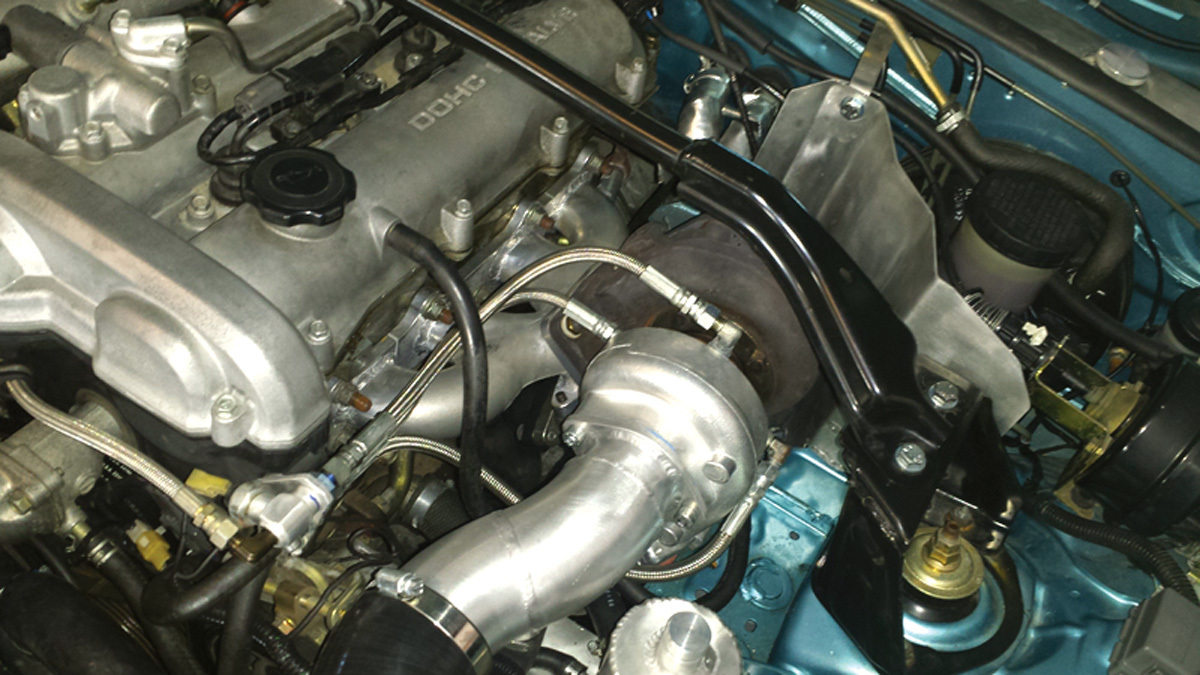
BEGI
Bell Engineering offers a less complete package with different flavors. Its Alpha/Omega system retails at $4,300, but is missing FM’s bigger injectors and the ECU. Bell recommends and sells Megasquirt, along with four different engine management options to suit individual needs. It has the only CARB-legal kits for ’90 to ‘99 model years. It also offers the only 225 whp unit, and OBDII- legal kits for the ’96 to ’05 Miatas. Although this firm mostly uses Garrett turbochargers, it offers the option of starting off with some cheaper components and uprating them later. As it takes awhile to plan your path with turbo systems, this flexibility for a truly custom Miata turbo kit could be useful, and a typical tradition of the turbo community is selling your outgrown parts further down the food chain through the forums. www.bellengineering.net.
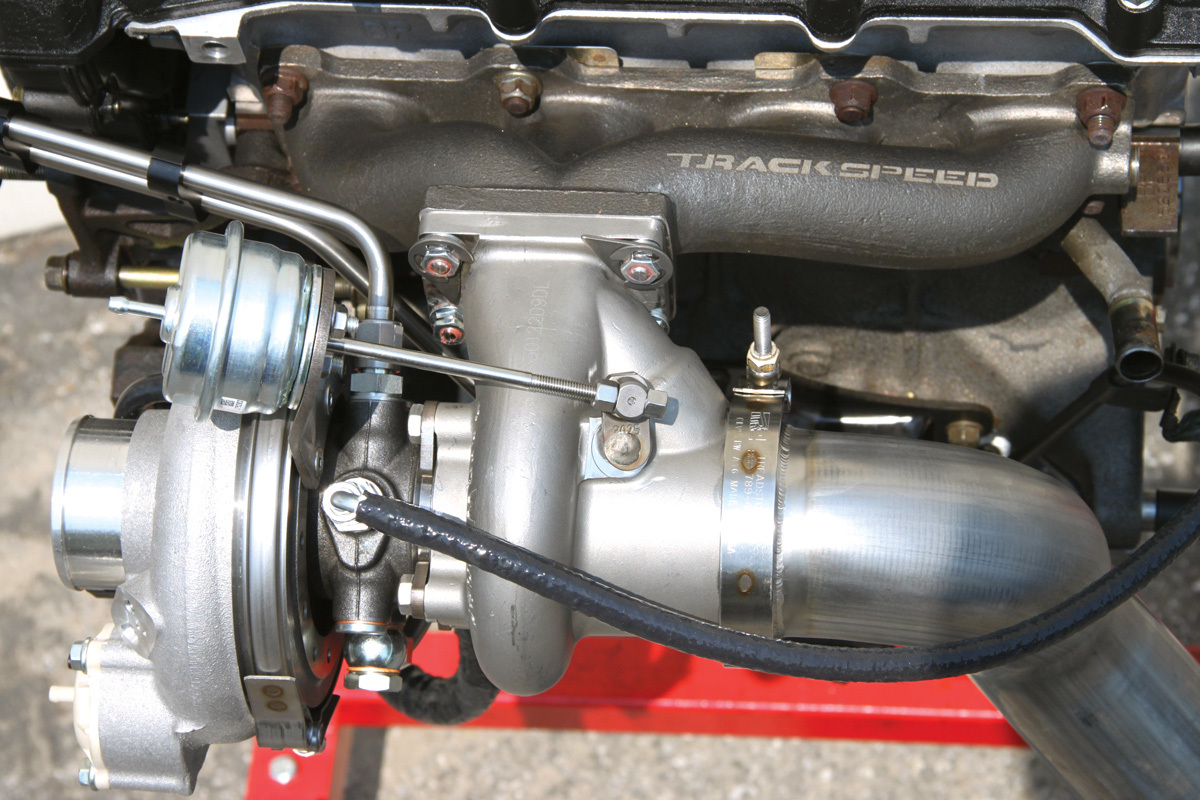
TRACKSPEED
Trackspeed takes a different approach, moving to Borg-Warner turbochargers and the company’s own cast stainless steel manifolds. The fasteners that connect the turbo to the exhaust have also received some attention, and are made of Inconel alloy. Having spent some time dealing with extreme-heat-stictioned and rusty turbo nuts and studs, the opportunity to undo them without blood loss is appealing. A sum $3,100 gets you Trackspeed’s EFR system turbo,
manifold, studs, downpipe and water and oil lines. www.trackspeedengineering.com.
ECOTECMIATA
This is an interesting and sensible starting point for alternative engines. The idea is to replace the Miata engine with a bigger and stronger GM Ecotec engine, which gives you the same power as a low-end turbo installation, but cheaper and with a lot less complication concerning heat, control and so on. Displacements go from 2.0L to 2.4L and availability is excellent. Dyno testing on converted cars shows torque of 200 to 220 lb/ft and 200 to 210 bhp. Stock 1,600 cc Miata power is 116 bhp, and the 1,800 cc engine gets 131 bhp, so going above 200 bhp is a welcome bump, and you’re still using an unstressed stock engine. Of course when you get bored with being sensible, you can turbocharge or supercharge the Ecotec. The complete kit price using the Miata transmission is $1,899 (U.S. dollars). The downside is it still sounds like a four cylinder, and any timing-chain rattle needs to be sorted quickly. The engine is aluminum but bigger than the Miata motors, so it weighs about the same. www.ecotecmiata.ca.
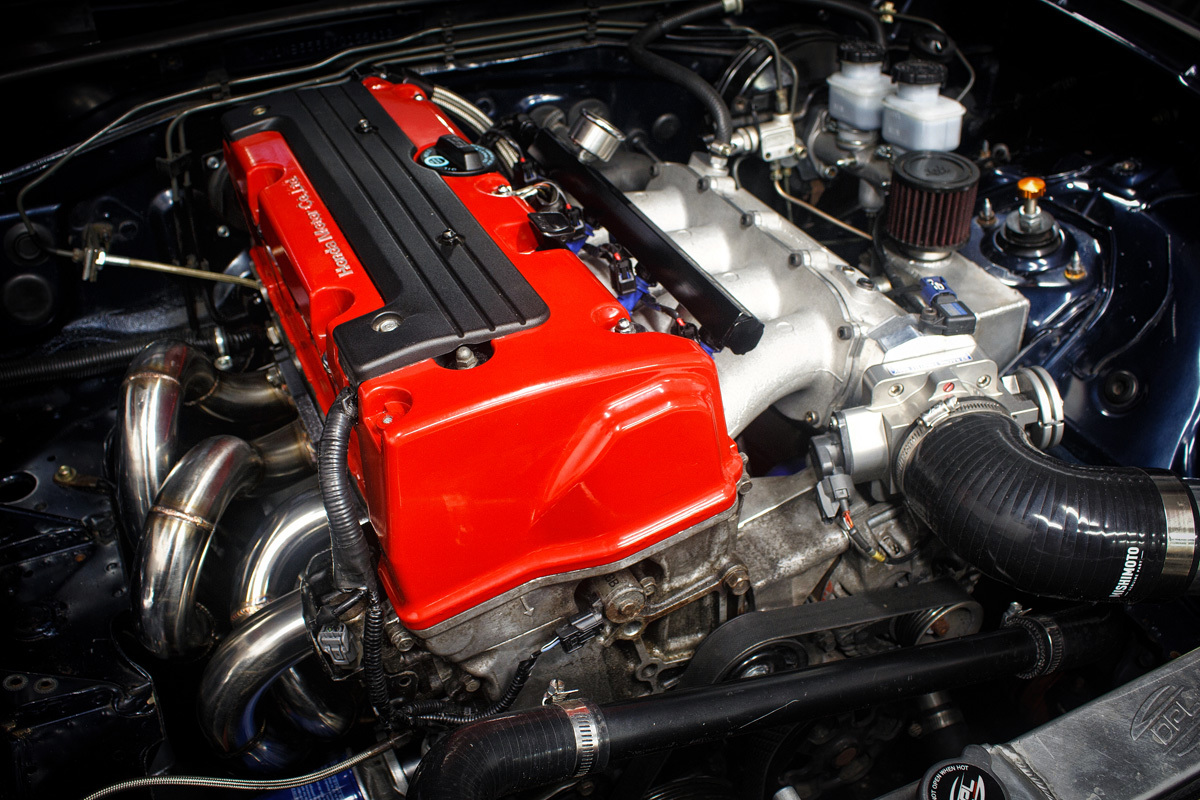
KMIATA
Honda’s K Series engine has a lot going for it. It’s 2.4 liters, so you’re going up 25 percent in sheer capacity over the 1.8-liter Miata engine, but the VTEC cams are variable, meaning they go from mild when shopping at 1,500 rpm to seriously nasty at an angry rpm. Combined with the extra grunt from capacity-related torque, this has to be worth thinking about if you just want the car to stay similar in character but go faster. The Miata drivetrain is also retained, and the aluminum Honda engines actually remove weight rather than adding it. The recommended ideal K engine is the K24A2 from a 2006 to 2008 Acura TSX, which has the strongest guts and biggest valves, and gets you 220 hp and 185 lb/ft at the wheels. That translates to 250 hp at the crank, at 8,000 rpm, with a stock tune. The kit at $3,750 contains all of your basics, including a crossmember, oil pan, mounts, wiring harness, oil pump conversion and the other mechanical requirements. KMiata then offers other upgrades such as headers, intake manifolds, and engine management to help complete your build. It also comes with a T-shirt – OK, sold! www.kmiata.com.
SUPERFASTMIATAS/MINITEC
MiniTec has been brewing up viciously fast classic Minis for years, and I’ve visited this company’s rural Georgia factory where one of its Honda-powered Minis scared the life out of me – excellent fun! The company has now expanded to putting big Honda engines in Miatas, using its long experience of making transplanted Honda engines work well and maintaining a formula of keeping it simple and prices reasonable. The $3,250 kit is fairly comprehensive, requiring just a J V6 engine and a computer. The kit contains the new subframe, transmission and flywheel adaptors, oil pan, poly engine mounts, oil pickup and thermostat housing. The stock Honda computer can be used, but it limits performance. Again, your own control system and laptop is an excellent place to start. Honda’s light aluminum engine blocks again prove to be a smart choice. Changing a small iron engine to a big aluminum one results in a weight gain of only 9 pounds. The original gearbox and differential can be retained, with the bigger post-1994 Mazda differential recommended. The factory radiator can even be used, which might reflect the better heat dispersion characteristics of aluminum engines. Minor mods are required to either the intake or your hood before you can shut it on the engine, but everything can he handled on exchange, or the company can convert your Miata for you. The result is up to around 300 bhp and 275 lb/ft of torque without turbos or superchargers, as the engines are Vtec and quite advanced, as well as just big at 3.2 or 3.5 liters. This gives you as much grunt and howl as the standard Miata drivetrain will handle, and crucially gets you the Vee soundtrack. Any Vee-engine sounds better than any non-Vee engine. That’s just the truth. www.superfastmiatas.com.
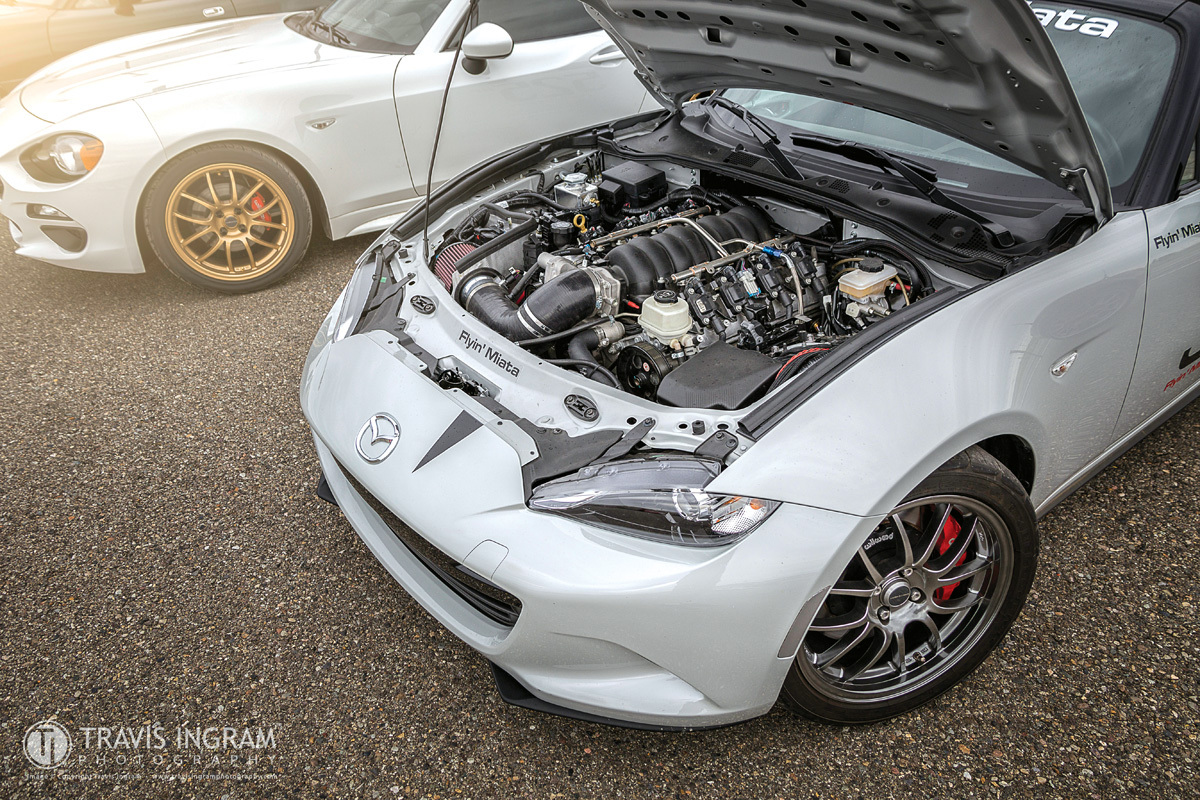
FLYIN’ MIATA/V8 ROADSTERS LSX V8
In general, GM’s aluminum LSX V8s are lighter, more powerful and more expensive than Ford V8s. Flyin’ Miata has teamed up with V8 Roadsters to offer a conversion to the LSX. Available parts include the mounting frame, (which is also a chassis brace), a set of beefed-up Getrag driveshafts, a clutch to suit a T56 transmission, an oil filter conversion, a set of headers, frame-rail reinforcements, an adaptor block to mate the air-conditioning to the new engine, and a new cooling system. FM is also working on a V8 conversion for the latest ND Miatas, so keep your mouse clicked on that now and again. www.flyinmiata.com.
BOSS FROG LSX V8
Boss Frog fit GM’s aluminum V8 with a series of kits rather than a package. The main engine-mounting subframe is $1,200, the T56 gearbox mount usefully includes frame stiffening rails as part of its structure, and the differential mounting frame stays with the traditional 8.8-inch Ford out of a Thunderbird. As the company points out, this independent rear-end setup and conversion kit can be used for any big-horsepower turbo Miatas. While upgrading is more or less compulsory for a V8, it could be useful for other extreme Miatas as well. Axles are referred to Driveshaftshop.com although driveshafts are supplied. Boss Frog uses shorty headers, as there’s minimal room after you’ve fitted a 6.0-liter engine in place of a 1.6-liter unit. Finally, the power steering conversion kit retains an easy life when parking. Total kit costs would be in the $5,000 ballpark, plus of course a cooling system, engine, transmission and differential. www.bossfrog.biz.
MONSTER MIATA
As noted at the outset, I road tested a Ford-powered Monster Miata 10 years ago, somewhere in the middle of the production run of 700 kits. It was very impressive, switching instantly between smooth cruising and blattering rage, according to right-foot pressure and timing. The preferred drivetrain is Ford Mustang GT 5.0 manual, which is California-legal, simple and cheap. The conversion kit is also cheap at $3,995, missing just the driveshaft, nut-and-bolt pack and power steering option. The $70 instruction manual is refundable if you buy a kit. One reason for the low price is that Monster recycles and returns many of your Ford parts, rather than making new ones, such as the subframe and oil pan. The weight gain is about 250 pounds, with an iron engine and heads, although weight distribution remains good at almost 50/50 front-to-back. You can of course use aluminium heads to save 50 pounds or so, but the combo of cheap V8 donors and a well-priced kit gets you a lot of bang for your buck. The T5 is the recommended tranny upgrade, but only because first gear is a bit low in the stock Mustang gearbox, and it runs out before the tires have even lit up. Power from a standard 1995 Mustang GT was 215 bhp – not stunning, but the 285 lb/ft of torque from the 302 is what makes a Miata squat and hurl itself forwards. Of course those numbers are stock secondhand Mustang, and you can do what you like with the 302, including going back to the top of the page and turbocharging it. www.monstermiata.webs.com.

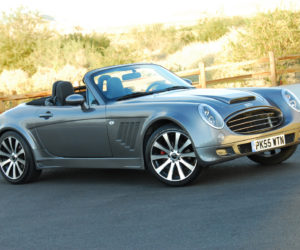
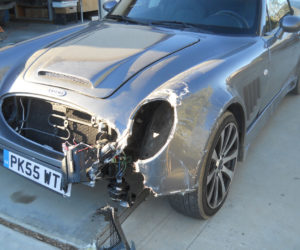
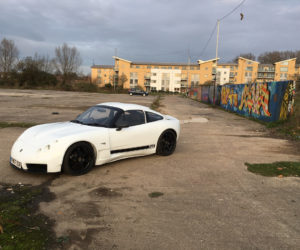
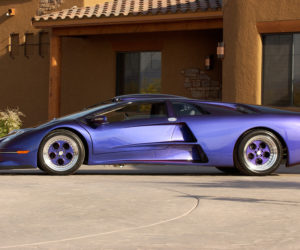
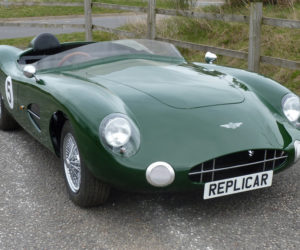
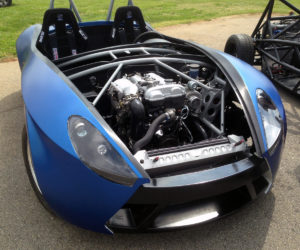




Comments for: Miata Muscle
comments powered by Disqus